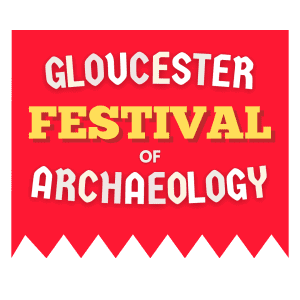
3d interactive art
The 3D interactive art is a cornerstone of the festival and helps guide you between the various venues involved in the festival.
Created by Joe Hill of 3D Joe and Max is a sought-after artist who has been making holes in the ground come to life all over the world with his clever use of perspective.
There are eight in total with each giving a glimpse into what could be below the ground, see if you can have your photo with them all.
Civil War defence
From Archaeological evidence and contemporary accounts, we know that a defensive earthwork and barricade was built during the siege of Gloucester just outside of the old BHS building on Eastgate St. It was built as an extra defence inside the city walls. It was built by soldiers but much of the work was undertaken by civilians, using whatever materials they could lay their hands on. At the start of September, the defenders of Gloucester were worried that the defences of the east gate were going to be broken – so they constructed a ‘strong work across the street with a large trench before it’ Thankfully the east gate never fell – so this barricade was never needed. The Siege of Gloucester took place between 10 August and 5 September 1643 during the First English Civil War. It was part of a Royalist campaign led by King Charles I to take control of the Severn Valley from the Parliamentarians. The defence of Gloucester did not win the war for Parliament, but it certainly stopped them from losing. One Parliamentary source referred to the people of Gloucester as the ‘conservators of the Parliament of England’.
Tram
Electric trams were introduced into Gloucester in 1904. There had been tracks for horse-drawn trams before that, the horse tramway had been built to the 4′ gauge, but the replacement electric service was built to the 3’6″ gauge. The electric service opened on 7 May 1904. Thirty tramcars were running, the livery was crimson and cream, but, during World War I, the livery changed to all-grey. The final trams ran in 1933. Tram tracks have been discovered underneath various sections of the Gate Streets.
Free activity, age 4+ (with supervision). Drop-in session – no need to book ahead..
High Cross
Dates from the 13th century. In the 15th century, the lower section was adapted with pipes to supply water from Robinswood Hill to the city centre. Rumour says this was filled with wine at the event of public celebrations! It is believed that the Cross was rebuilt during the reign of Henry VII and again during the reign of his son, Henry VIII. By the eighteen century, it stood nearly 35 feet tall; The lower section held the water pipes whilst the upper of the two sections held statues of previous sovereigns of England, King John, Henry III and Eleanor his wife, Edward III, Richard II, Richard III, Elizabeth I and Charles I. This magnificent piece of sculpture stood proudly in the centre of Gloucester until 1751 when it was considered a nuisance to passing traffic and removed.
Roman Baths
A Roman column was uncovered near the HSBC building in 1971 beneath no 4 Westgate during works to build an extension of the Midland Bank. It is now in the City Museum. It is known to be one of eight such columns found, running along the northern edge of Westgate Street forming a colonnade or part of a large building or complex, with one theory suggesting that the colonnade formed part of a bath complex.
Monks Tunnel
There is a legend of a tunnel between the Fleece Inn and the Cathedral.
It does not exist as far as we are aware, but tunnel legends are common so it is quite good to air this and create conversation around it.
A completely fictional piece, the Cathedral owned some of the Inns and brewed beer.
The Kings Board
Here once stood ‘The Kings Board’ a medieval stone building, a marketplace, built on the site of the Gloucester mint which ceased production of coins in the late 13th century.
It was taken down in the 18th Century and parts of it were made into a garden building which was moved to Hillfield Gardens London Rd where it can be seen today
The Tailor of Gloucester
This depicts the Tailor of Gloucester story. Beatrix Potter visited Gloucester and heard a story about a local Tailor who went to bed one night and came down the next day to find a coat that he had been working on almost finished, with a note – ‘no more twist’. The tailor thought it had been completed by the fairies and in the future advertised his garments as such! It was his apprentices who were too embarrassed to go home after a night on the ale.
She based her story on this (using mice instead of fairies) and used Westgate Street and College court buildings as her inspiration for her illustrations.
Visit the shop and museum in the college court
Roman City Walls
This artwork depicts the Roman Walls.
They ran around the original Roman Fortress. Excavations have shown them to be in this location.
The walls can be seen in the basement of the furniture shop on Southgate Street, the Museum of Gloucester and the front of Boots on Eastgate Street.


